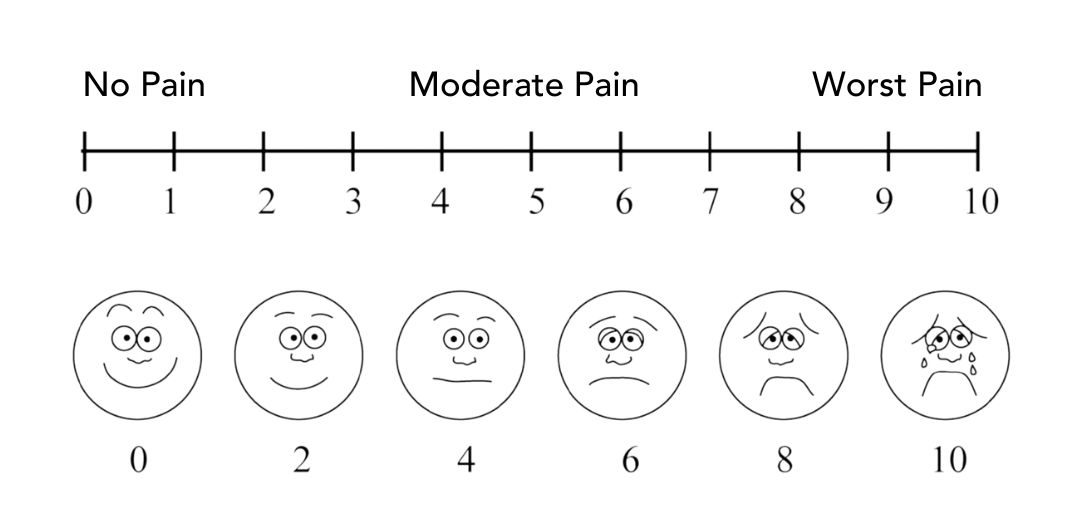Assessing pain
The sensation of pain is different for every individual. Some people experience little to no pain
at the end of life and some people have more. It is our goal to help you meet your goals for
managing any pain that you experience. Be sure to let your Hospice of the Piedmont team
know about any concerns or questions you have about managing pain.
At every visit, your nurse will ask you about pain level. When describing pain, you will often be
asked to give a number from 1-10.

Assessing pain in Non-verbal patients
If someone cannot speak or does not respond verbally, we can still determine if he or she is
having pain. The following questions are used to assess pain in non-verbal patients. Your
Hospice of the Piedmont nurse will help you learn to use this scale and determine how to help
treat the pain based on the results.
- How would you describe their breathing independent of vocalization?
- Normal (0)
- Occasional labored breathing Short period of hyperventilation. (1)
- Noisy labored breathing. Long period of hyperventilation. Cheyne-Stokes respiration. (2)
- How would you describe their negative vocalization?
- None (0)
- Occasional moan or groan. Low-level speech with negative or disapproving quality. (1)
- Repeated troubled calling out. Loud moaning or groaning. Crying. (2)
- How would you describe their facial expression?
- Smiling or inexpressive (0)
- Frightened. Frown. (1)
- Facial grimacing. (2)
- How would you describe their body language?
- Relaxed (0)
- Distressed pacing. Fidgeting. (1)
- Fists clenched. Knees pulled up. Pulling or pushing away. Striking out. (2)
- How would you describe their consolability?
- No need to console. (0)
- Distracted or reassured by voice or touch. (1)
- Unable to console, distract or reassure. (2)